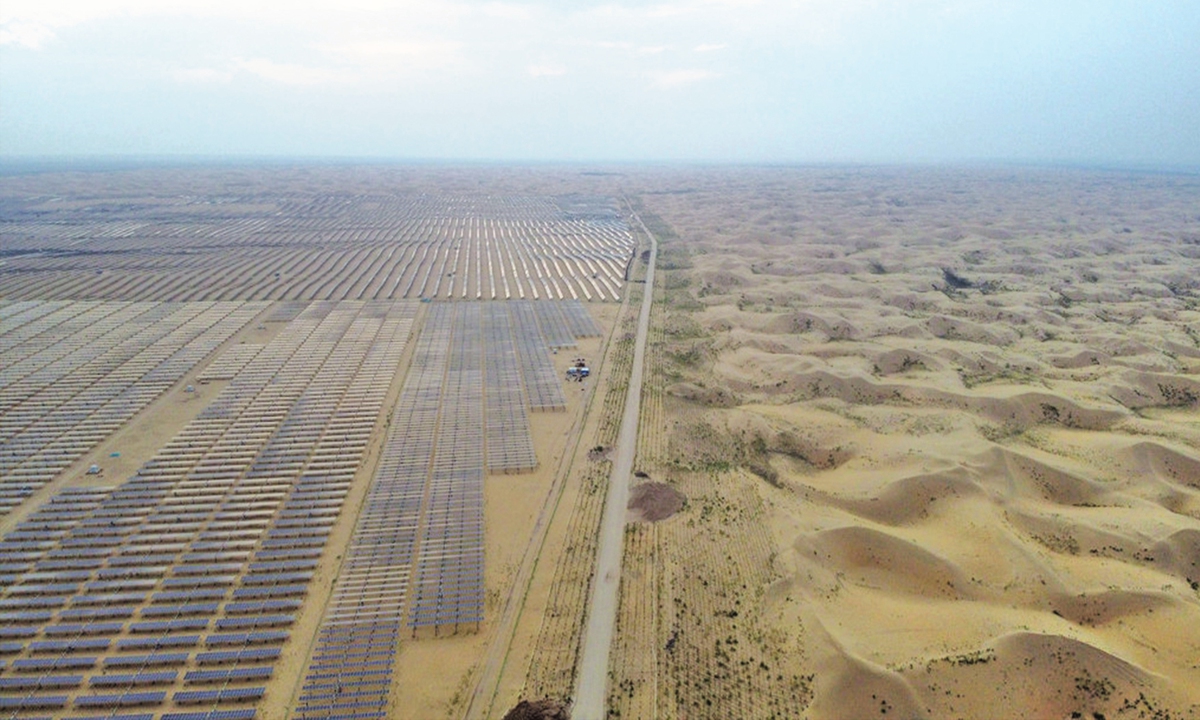
A photovoltaic power station in Dalad Banner, Ordos of North China's Inner Mongolia Autonomous Region. Photo: IC
To mark the centennial of the discovery of the late Homo sapiens fossil known as "Hetao man" in China in 1922, an international forum kicked off on Monday in the Uxin Banner of Ordos, the home of this archaeological discovery in North China's Inner Mongolia Autonomous Region.
Including Chinese academics from institutions like the Institute of Archaeology, Chinese Academy of Social Sciences, the ongoing event gathers 170 international experts from countries such as the UK, the US, France and Japan.
Archaeologist Xue Feng told the Global Times that this line-up of guests denotes the "significant global research value" of Hetao culture.
Discovered at Uxin Banner's Salawusu cultural relic site by French priest and archaeologist Emile Licent more than 100 years ago, the tooth fossil was accompanied by 200 Paleolithic relics. These discoveries were the earliest Paleolithic remains discovered in China at the time.
"The discovery was sensational as it has altered the Western academic world's speculation that China, and even Asia, had no Paleolithic culture," Xue told the Global Times.
The three-day event covers topics such as the origin of the Salawusu culture, new interdisciplinary methods used in Hetao culture research and the technology, culture and survival methods of Paleolithic humans in Eurasia.
Paleolithic archaeologist Lin Yuehua told the Global Times that these topics revealed the "up-to-date research orientations" of the historical site.
"A site that has a long history is often consistent with modern values that can be revealed by generations of archaeologists digging deep," Lin noted, adding that the Hetao culture has the potential to extend to areas such as "public cultural education" and be an exemplar of the "creative transformation of China's cultural legacy."
In 2022, two local parks, the Salawusu archaeological site park and the Salawusu wetland park, were combined into a park that includes a cultural center dedicated to the Hetao culture.
The combination of the two parks is seen by cultural legacy management expert Zhang Xun as a "strategy" to amplify the importance of the site by demonstrating both its cultural and biodiversity virtues.
Several moves have been made to better develop the park, including further promoting it as a national 5A scenic spot as well as accelerating the Salawusu site's application to become a world natural and cultural heritage site, Li Bin, a representative of the park, said at the conference.
The unique site has been listed as a candidate for China's second batch of national archaeological parks.
Xue told the Global Times that, besides the park's archaeological value, the Hetao site represents an integration of ancient Central Plains' agriculture and a nomadic civilization.
"It is the evidence of China's historical characteristic of comprehensiveness and diversity," Xue remarked.
URL: https://www.seeglobalnews.com/read-2091.html